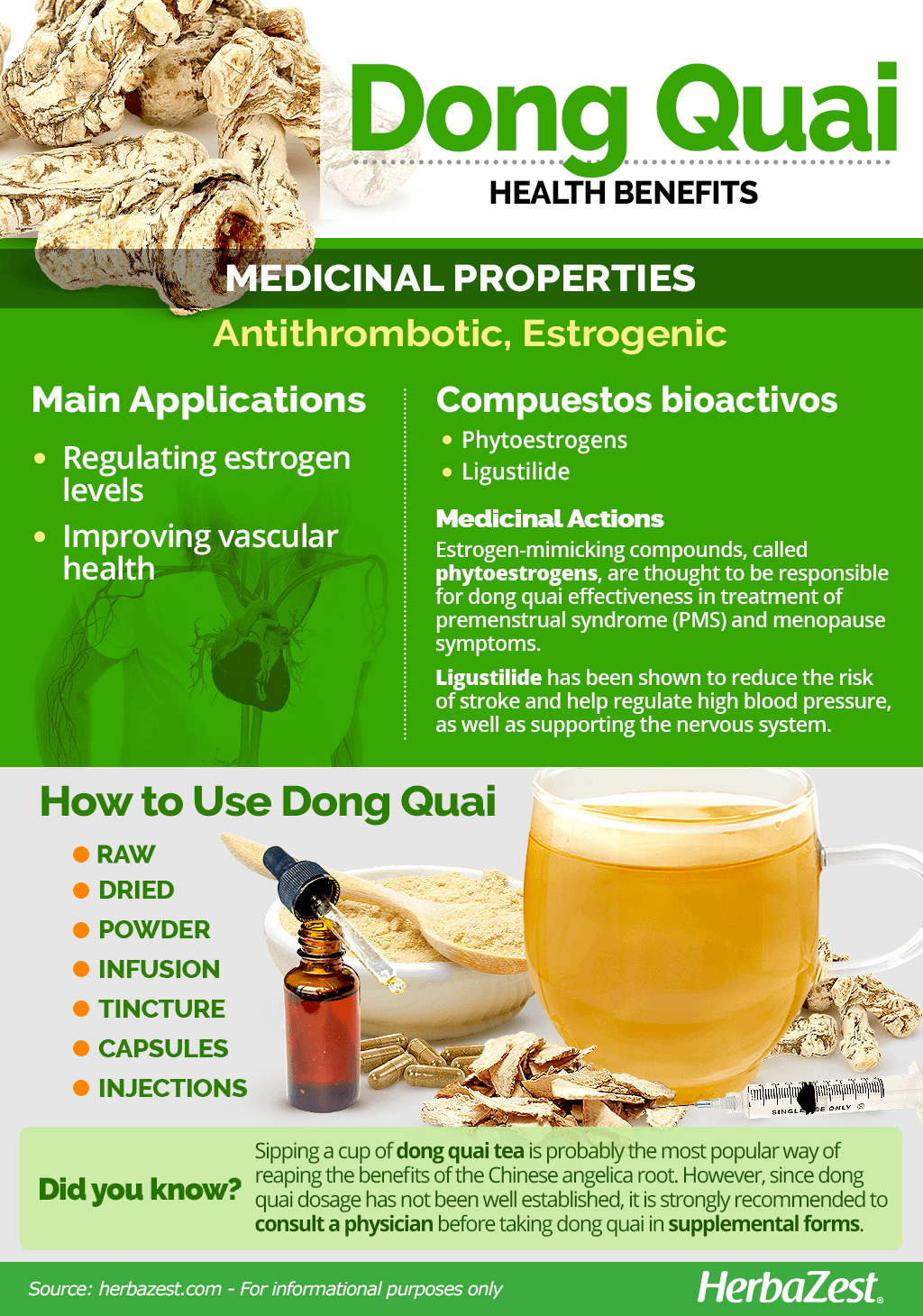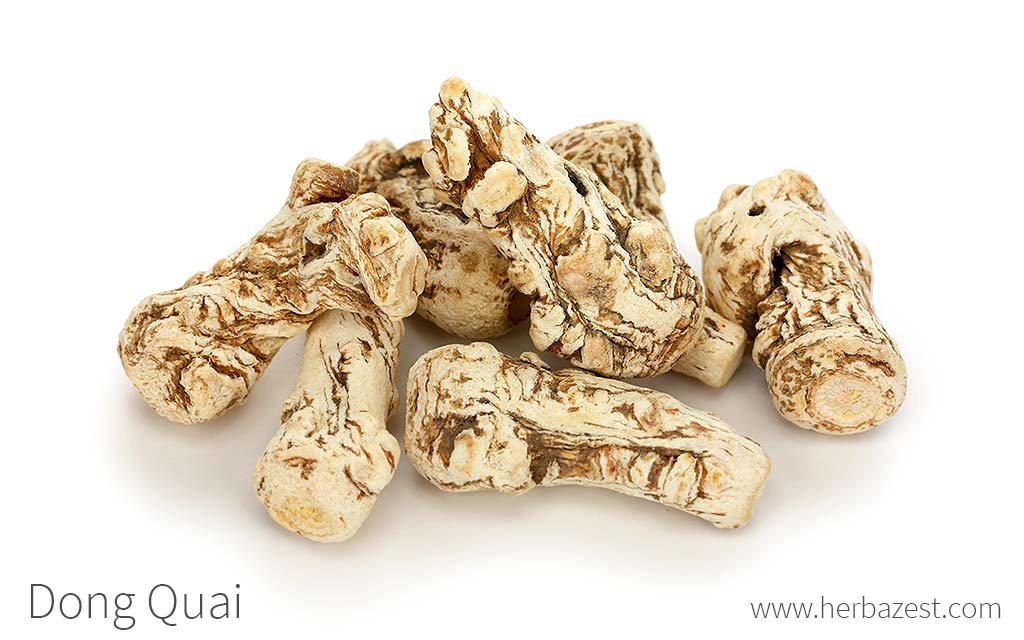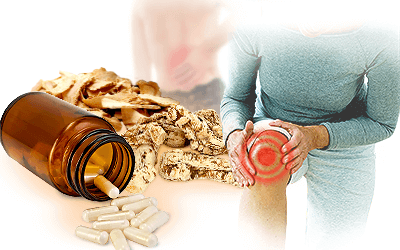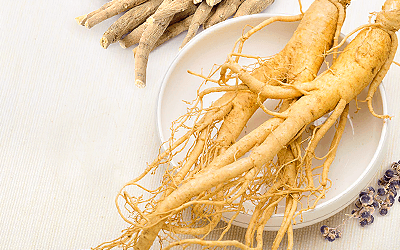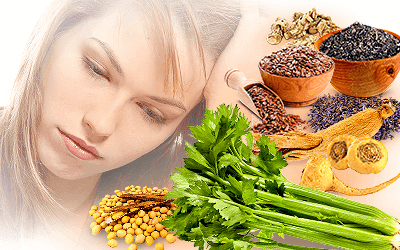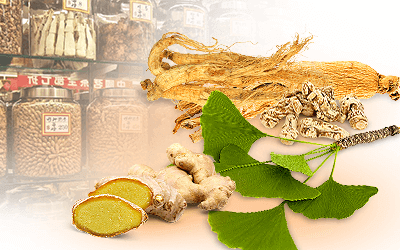As one of the fundamental components of the traditional Chinese medicine (TCM), dong quai benefits have been valued throughout Asia, where the root is also called Radix angelicae sinensis and it has been used as an everyday tonic and herbal medicine for centuries. Today, dong quai properties are believed to greatly contribute to human well-being, although women are thought to reap the most advantage, and the herb is often referred to as "female ginseng."
Dong Quai Medicinal Properties
- Medicinal action Antithrombotic, Estrogenic
- Key constituents Ligustilide, fitoestrógenos
- Ways to use Capsules, Hot infusions/tisanes, Tincture, Powder, Dried
- Medicinal rating (2) Minorly useful plant
- Safety ranking Use with caution
Health Benefits of Dong Quai
The most common use of dong quai has always been as an herbal medicine, particularly valuable to women, thanks to its modest estrogenic effect; however, other dong quai properties, such as its antispasmodic and analgesic actions, are also noticeable. Dong quai benefits have been proven useful for:
Regulating estrogen levels. Dong quai has been traditionally used for relieving premenstrual syndrome (PMS), as well as for reducing the severity of menopause symptoms.
Improving vascular health. Dong quai has been shown to increase blood flow, reducing the risk of clotting that can lead to thrombosis and atherosclerosis.
Additionally, dong quai has been shown to enhance calcium absorption, slowing down age-related bone mass loss, or osteoporosis.
How It Works
A variety of unique estrogen-mimicking compounds, kown as phytoestrogens, make of dong quai an effective herb for female health problems. While the exact estrogenic mechanisms of don quai are yet to be fully explained, the herb has been successfully used for centuries in the treatment of premenstrual and menopausal symptoms. While some studies suggest estrogen-like effects in dong quai extracts, whereas others report minimal interaction between Chinese angelica root's biocompounds and the endocrine system.
Ligustilide is a major compound in dong quai, and it is thought to be mainly responsible for the antioxidant and antithrombotic activities of the Chinese angelica root. Ligustilide has been shown to reduce the risk of stroke and help regulate high blood presure, as well as supporting nervous system health.
Dong quai has been shown to improve cognitive and behavioral disorders caused by central nervous system dysfunction.
Other herbs with estrogenic effects, which help relieve PMS and menopause symptoms, are alfalfa, black cohosh, and soy, whereas maca provides hormone balancing benefits without the presence of phytoestrogenic compounds. On the other hand, avocado, lucuma, olive, and sacha inchi provide cardiovascular benefits as well.
Dong Quai Side Effects
Dong quai can make the skin more sensitive to the sun, potentially resulting in inflammation and burns. To counter this, those taking dong quai should stay out of the sun or apply ample sunscreen.
Dong Quai Cautions
Pregnant women should not take dong quai, as it may induce miscarriage. Children and breastfeeding women should not take this herb. It is also contraindicated in people with chronic diarrhea and bloating and women at risk of reproductive cancers. Dong quai may interact with blood thinners and hormone medications, whether herbal or pharmaceutical.

How to Consume Dong Quai
- Edible parts Root
Dong quai health benefits, based on the phytonutrients of the Chinese angelica root, are often used in Asian cooking. Dong quai dosage for medicinal consumption is not well established, so it is important that those wishing to take it first see a physician to find out the proper amounts for them.
The Singaporean pork-based dish, bak kut teh, is perhaps the most well-known dish to feature the Chinese angelica root.
Natural Forms
Raw. In Asian cuisine, dong quai root benefits are frequently obtained by chopping it up and adding it to soups, sometimes also using it as a topping for dishes with tofu.
Dried. The desiccated root of dong quai can be chopped and prepared into infusions in order to relieve both PMS and menopausal symptoms, as well as for naturally controlling high blood pressure.
Powder. Dong quai powder is very popular and it preserves all the active compounds responsible for dong quai health benefits. It can be brewed, as well as added to juices, smoothies, and even baking goods.
Infusion. A dong quai tisane can be brewed by adding one teaspoon of the Chinese angelica root to one cup of hot water.
Herbal Remedies & Supplements
Tincture. A dong quai tincture can be taken for relieving menstrual pain. Since this preparation is composed by nearly 70% alcohol, it needs to be diluted in a glass of water.
Capsules. Supplements provide a consistent dosage of dong quai. They are typically prepared from powdered Chinese angelica root.
Injections. Injections are administered at hospitals in China and Japan, but they are not widely available or meant for home use.
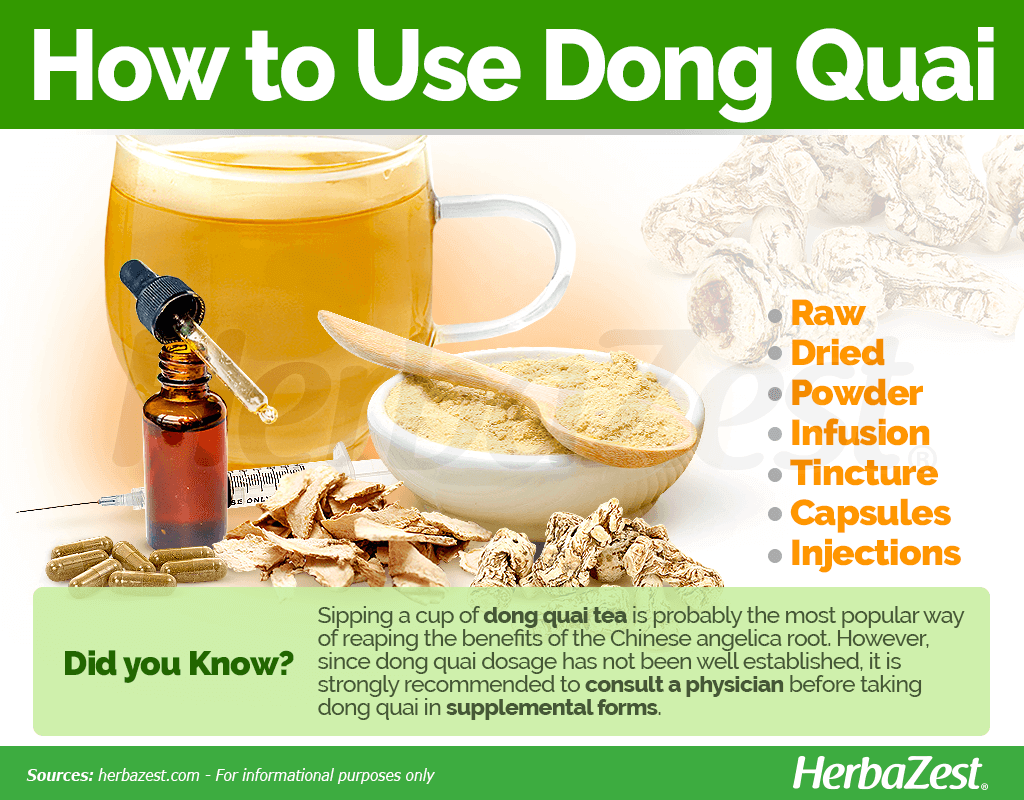
Growing
- Harvested parts Rhizome
- Light requirements Partial shade
- Soil Medium (loam)
- Growing habitat Mountain regions
The dong quai plant (Angelica sinensis) is a fairly hearty perennial, seldom grown outside of its natural habitat, but if the right conditions are met, it is possible to cultivate it in a home garden.
Growing Guidelines
The dong quai plant can survive temperatures down to 23°F (-5°C) or even lower, conditioned to harsh climatic change in its native mountainous environment.
Ample sunlight is not necessarily essential to its development, as dong quai can be grown in either partial shade or full sun.
Fertile soil that is rich in organic matter however, makes all the difference in regards to proper growth and root development.
Seeds should be planted in the early spring and watered regularly.
After three years, the dong quai roots or rhizomes should be ready for harvest.
Additional Information
Plant Biology
The dong quai plant (Angelica sinensis) is a perennial that can reach up six feet (2 m) tall, and has a sturdy, hollow stem that supports large green leaves. Clusters of white flowers appear in the summertime, but they have almost no medicinal value compared to the plant's deep, spreading roots or rhizomes, called Radix angelicae sinensis in Asia, and Chinese angelica roots in the West. These are often brown on the outside but lighter within.
Classification
Dong quai belongs to the Apiaceae family, a group of over 3,700 different species that houses staple crops of great economical and medicinal importance, such as carrot (Daucus carota), fennel (Foeniculum vulgare), celery (Apium graveolens), and dill (Anethum graveolens).
Related Species
While there are approximately 50 species in the Angelica genus, Angelica sinensis - Chinese angelica - is the only true version of dong quai. It is, however, sometimes mistaken for closely related species native to other continents. Angelica atropurpurea, or American angelica, is similar in structure but less aromatic; and Angelica archangelica, or European angelica, is beneficial for overall health and provides other medicinal benefits, but it is significantly less potent.
Historical Information
Hailing from the swampy, mountainous regions of China, Korea, and Japan, the dong quai herb has been consumed by humans for well over 2,000 years, and the first mention of Angelica sinensis can be traced back to Chinese medical texts from 400 BCE. It was not until late in the 19th century that dong quai made its way to Europe, in the form of a proprietary preparation for treating gynecological disorders.
Popular Beliefs
In ancient Chinese tradition, dong quai is described as a tonic that rebalances qi (chi), an abstract concept that connects energy to the immune system.
Economic Data
Statistics demonstrate that 70 - 80% of the Asian population uses herbal medicines on a regular basis, and, as one of the most popular remedies of all, dong quai is among the top tier products used. China, Korea, and Japan produce and consume the greatest quantity of the herb, though supplements have become a popular export: in 2011, over $102,000 USD worth of the Chinese angelica root were sold in the United States alone.
Sources
- Chinese Herbal Medicines, Advances in Studies on Pharmacological Functions of Ligustilide and their Mechanisms, 2012
- Maturitas, Contemporary Alternatives to Plant Estrogens for Menopause, 2006
- Herbal Antibiotics
- Encyclopedia of Herbal Medicine
- MedlinePlus Herbs and Supplements, Dong Quai
- University of Maryland Medical Center, Dong Quai
